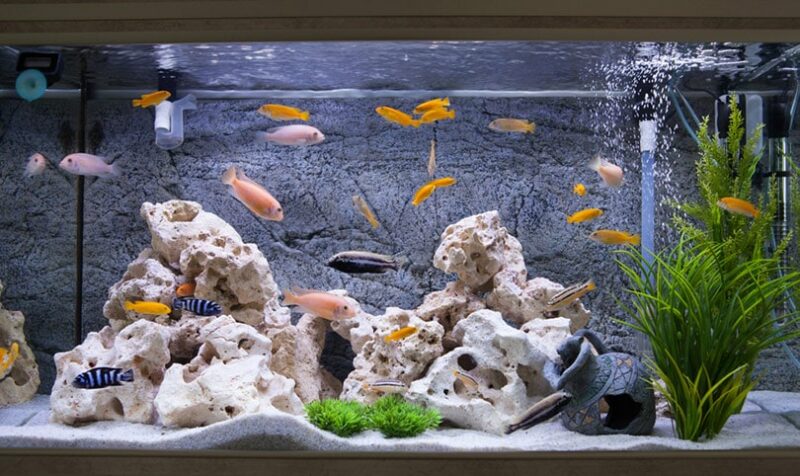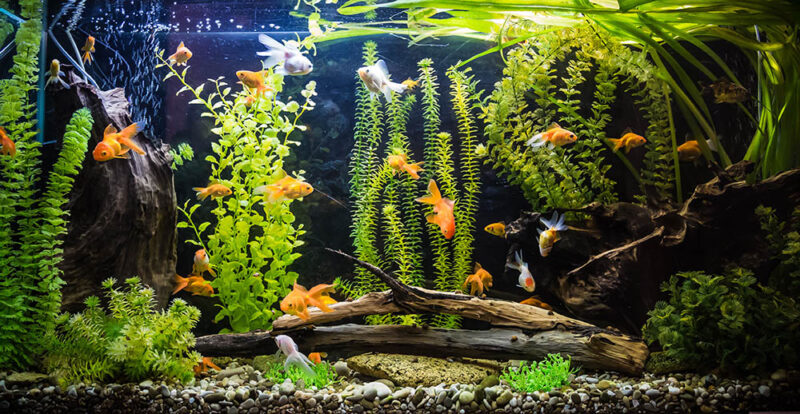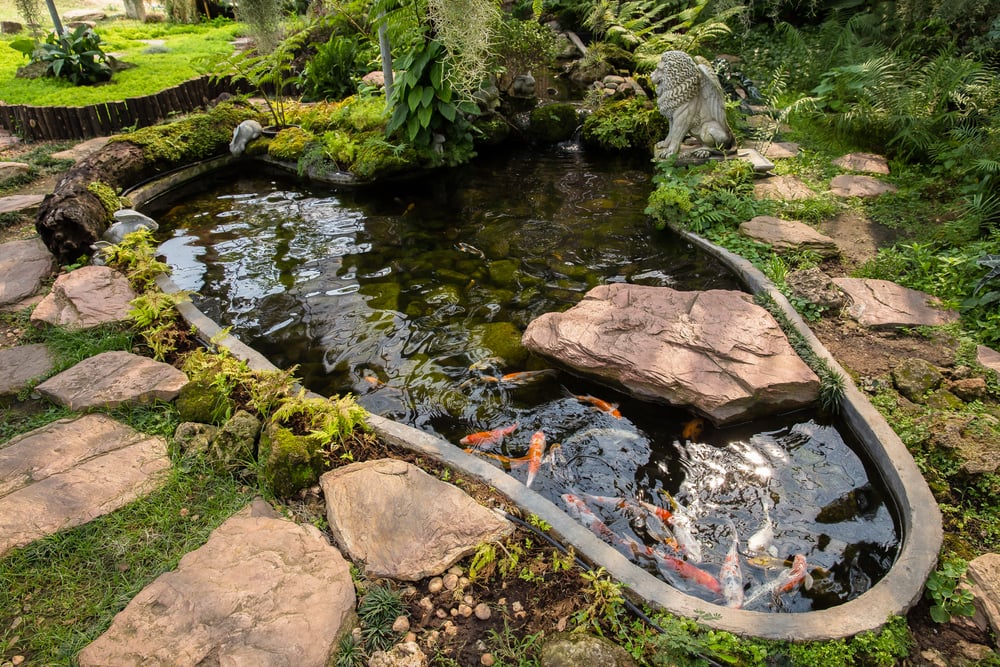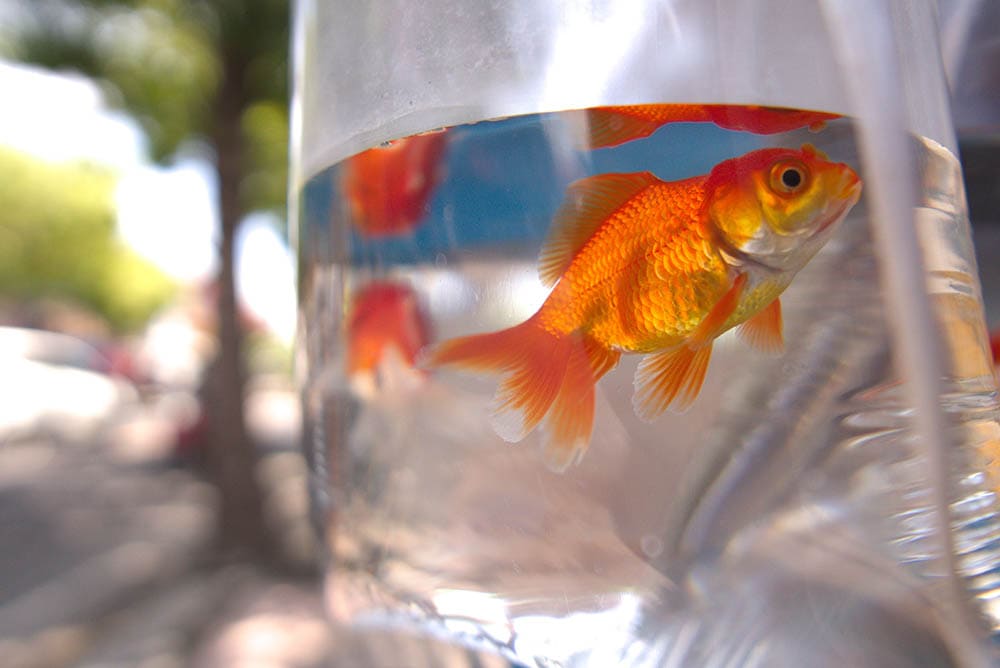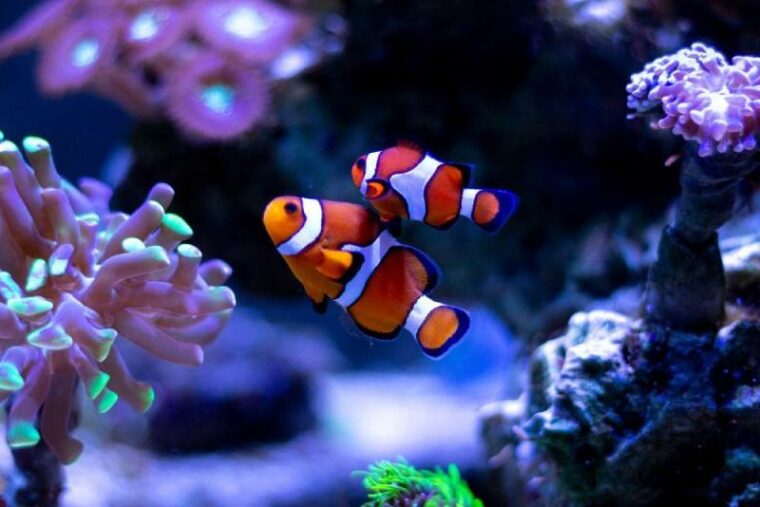
Finding Nemo was an extremely popular Disney movie that brought an interest in saltwater fish to children and adults alike. The bright colors and fun characters made the movie memorable, as well as interesting. However, a movie about talking fish shouldn’t be taken as a good source of information, so many people were left wondering more about the fish that appeared throughout the movie. Here are some of the fish you spotted in Finding Nemo!
The 11 Different Kinds of Fish in Finding Nemo
1. Clownfish
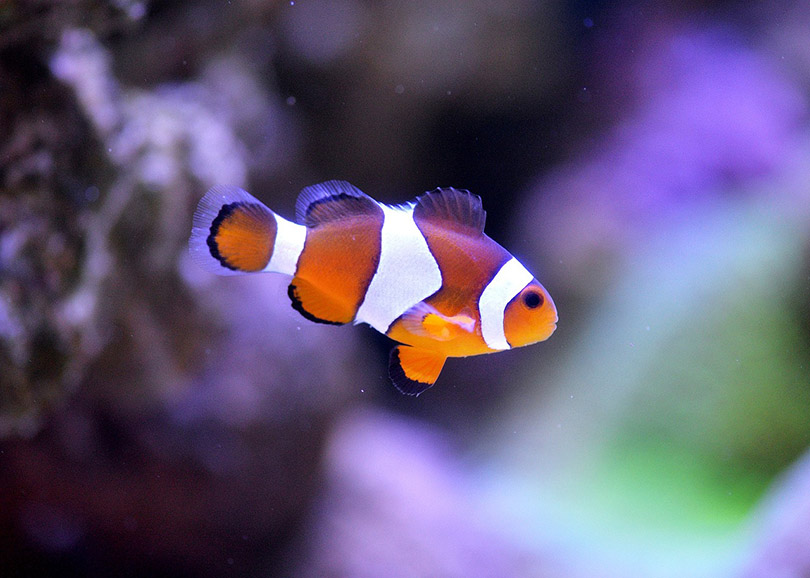
| Size | Up to 5 inches |
| Character | Nemo, Marlin |
| Origin | Pacific Ocean, Indian Ocean |
The star of Finding Nemo was Nemo and his dad, Marlin, both of whom are Clownfish. Clownfish come in multiple species, but all species look similar, with many sharing similar markings and colors. Nemo and Marlin were Common Clownfish, though, which can reach up to 5 inches in length, but typically stay below 4 inches. These tropical fish are native to the Pacific and Indian Oceans, including the areas around Australia, where the movie was set.
2. Blue Hippo Tang

| Size | 12 inches |
| Character | Dory |
| Origin | Indo-Pacific coral reefs |
Although Marlin and Nemo are technically the stars of the movie, the lovable and forgetful Dory stole the show for many viewers. Dory is a Blue Hippo Tang, which can reach up to 12 inches in length, so in real life, Dory would likely be much larger than Marlin. These fish sport vibrant blue and yellow coloration with black on the face. They are sensitive to poor water quality and require specific care conditions to thrive in captivity.
3. Yellow Tang

| Size | 8 inches |
| Character | Bubbles |
| Origin | Pacific Ocean |
The Yellow Tang, represented by Bubbles in the movie, is a lovely fish that may sound like it should look a lot like the Blue Hippo Tang, but they are quite different. The Yellow Tang has a distinct, long face. Although extremely popular as aquarium fish, the Yellow Tang is not available as a captive-bred fish, so all Yellow Tangs in the aquatics trade are wild-caught fish. Although Bubbles loves to blow bubbles in the movie, this isn’t a routine behavior of this species.
4. Spotted Eagle Ray
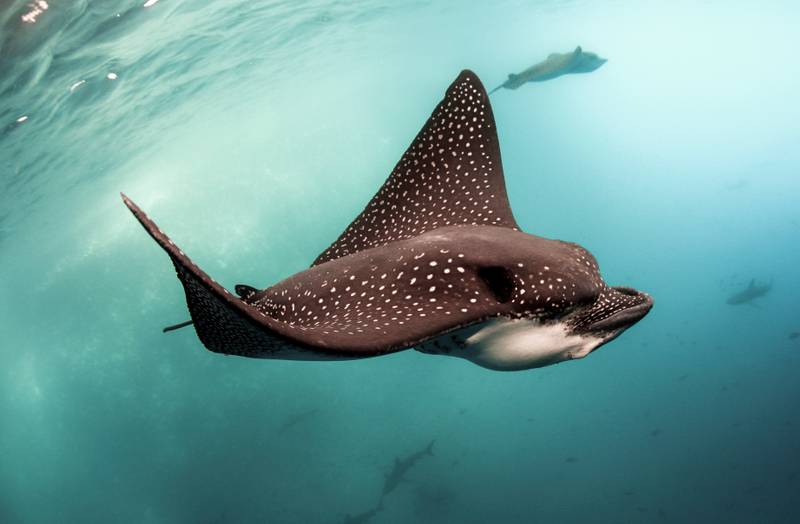
| Size | Over 16 feet |
| Character | Mr. Ray |
| Origin | Pacific Ocean, Indian Ocean, Atlantic Ocean |
The kindly Mr. Ray is a Spotted Eagle Ray, which you won’t find in any aquatics shop! These large fish can exceed 16 feet, and they are not suitable for the vast majority of home aquarium setups. You can likely spot a Spotted Eagle Ray in a professional aquarium near you. Unfortunately, this animal is listed as a near-threatened species by IUCN. They are rapidly heading toward endangerment due to habitat loss and overfishing.
5. Longnose Butterfly Fish
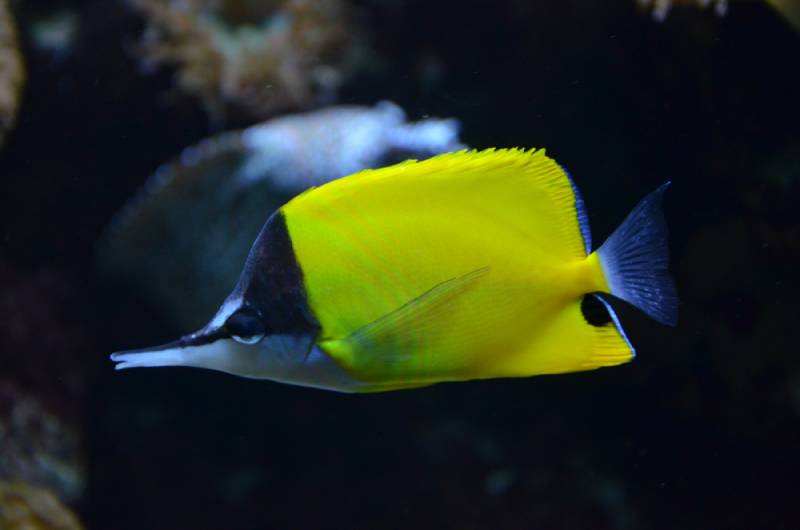
| Size | 9 inches |
| Character | Tad |
| Origin | Pacific Ocean, Indian Ocean, Atlantic Ocean, Red Sea, Caribbean Sea |
Tad, Nemo’s pal, is a Longnose Butterfly Fish, which is, as you might imagine, named for its long, pointy face, giving them the appearance of a snout. A popular fish in the aquarium trade, the Longnose Butterfly Fish is generally considered to be a hardy fish. They make a great addition to reef tanks, although many of them are not captive bred, so it’s common for these fish to be wild caught. Although these fish have a large range, they’re especially common in places like the reefs near Hawaii.
6. Moorish Idol
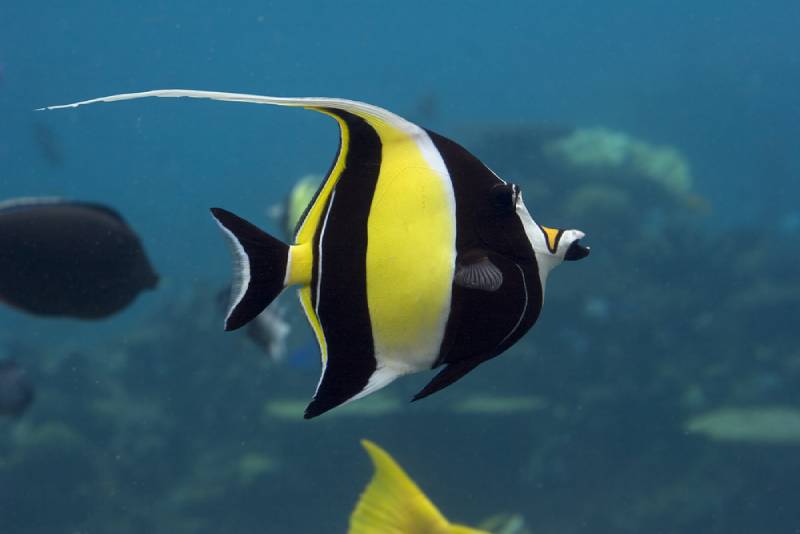
| Size | 7 inches |
| Character | Gill |
| Origin | Indo-Pacific reefs, Red Sea, Pacific Ocean |
The Moorish Idol is a difficult fish, which makes it a perfect fit for the character of Gill, the gruff, experienced aquarium fish. This fish is considered an expert-level fish, and it can be difficult to find them for home aquariums. The vast majority of Moorish Idols in the aquarium trade are wild-caught, and many of them succumb to stress, injury, and poor water quality before they even make it to aquariums. Due to the difficulty level of keeping these fish, many aquarists recommend avoiding them altogether.
7. Striped Damselfish
| Size | 3–4 inches |
| Character | Deb |
| Origin | Pacific Ocean |
The Striped Damselfish may not be as goofy and confused as Deb in real life, but these beautiful fish are very popular in the aquatics trade. They are hardy fish that are easy to keep, making them a good option for first-time reef or saltwater tank keepers. They are considered to be semi-aggressive fish, though, so tankmates should be chosen with care. You may also see this fish referred to as a Three-Striped Damselfish, Humbug Damselfish, or Whitetail Dascyllus.
8. Royal Gramma
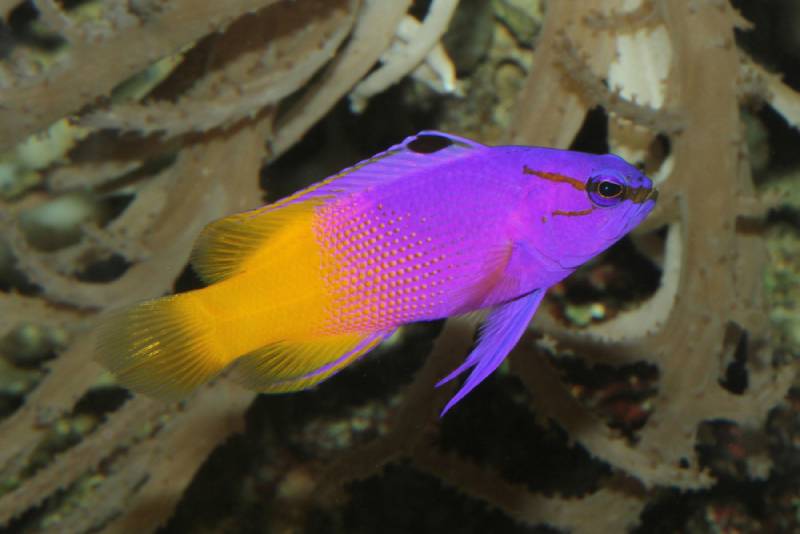
| Size | 2–3 inches |
| Character | Gurgle |
| Origin | Atlantic Ocean |
The Royal Gramma is a gorgeous fish, sporting bright purple and yellow colors. They are extremely popular among aquarists and reef keepers, and you may also see this fish called the Fairy Basslet. They are hardy and easy to keep, often making them recommended fish for first-time reef keepers.
Interestingly, the Royal Gramma is native to the Atlantic Ocean, so it wouldn’t be likely to cross paths with most of the other fish in Finding Nemo. Obviously, Gurgle is kept in an aquarium, so he lives with fish he wouldn’t live with in the wild.
9. Puffer Fish
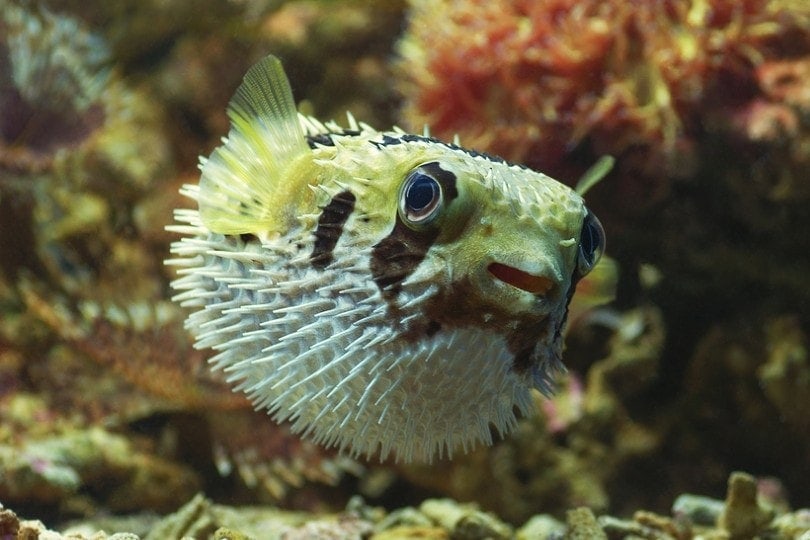
| Size | 1–24+ inches |
| Character | Bloat |
| Origin | Variable |
Bloat is a Puffer Fish, which is a fish that many people are familiar with in appearance. However, most people don’t realize that there are many species of Puffer Fish, which can vary in size from around 1 inch to over 2 feet. It’s difficult to say exactly what species of Puffer Fish that Bloat was intended to represent.
Puffers live in a variety of environments in the wild, and while most species are saltwater fish, there are also species that are able to live in brackish and freshwater environments. As fun as it may be to see a Puffer puff up when scared, it’s not recommended to intentionally induce this behavior, as it can be stressful for the fish.
10. Flounder Fish
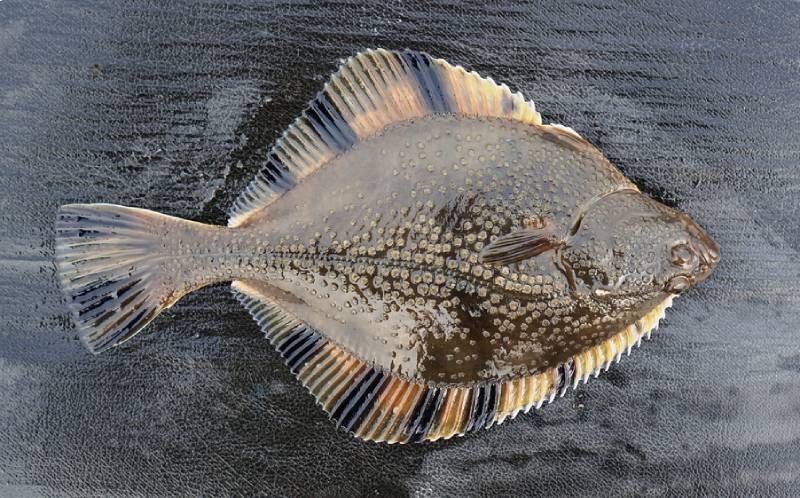
| Size | 9–24 inches |
| Character | Mr. Johannsen |
| Origin | Variable |
The Flounder is a relatively common fish that can be found in many species in oceans across the world. It’s never specified in Finding Nemo what type of Flounder Mr. Johannsen is. These fish are generally peaceful, although they should be used with caution in reef tanks. Since they are carnivores, it’s not unheard of for a Flounder Fish to eat smaller tankmates. As silly as Mr. Johannsen looks in the movie, he’s actually a pretty accurate representation of the Flounder, which is a flat fish with eyes on top of its head and a mouth off to one side.
11. Goldfish
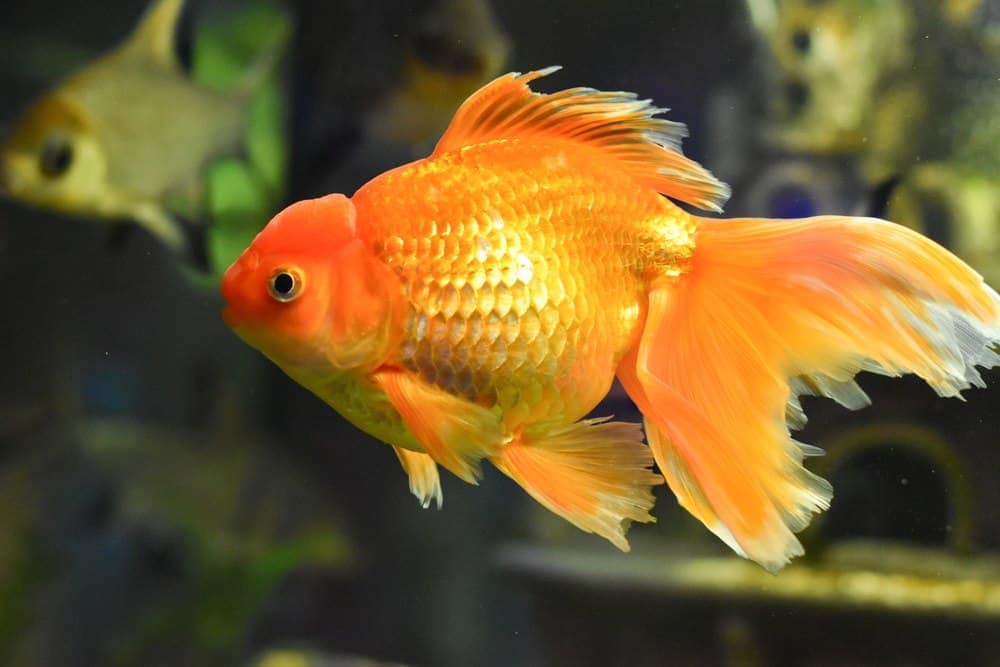
| Size | 5–18 inches |
| Character | Chuckles |
| Origin | Freshwater bodies of water in Asia |
As the only truly freshwater fish to appear in the movie, Chuckles makes a small appearance and, to be fair, you may have forgotten about him. Why? Because he’s already dead when he’s introduced, thanks to the poor fishkeeping skills of Darla. Goldfish are very hardy fish that are great for beginners, but they are often kept in poor water conditions and inappropriate environments, significantly shortening their lifespan. With proper care and good water quality, Goldfish can exceed 15 years of age.
Conclusion
Many of the fish in Finding Nemo are suitable for home reef and saltwater tanks, but some of them are difficult or impossible to find or keep in captivity. If you have an interest in a Finding Nemo-style tank, make sure to thoroughly research the needs of any fish before bringing them home. Saltwater and reef tanks can be challenging on their own, and bringing home fish with complicated needs to meet the cast of characters from a movie can put you and your fish in a bad situation.
Featured Image Credit: beto_junior, Shutterstock



